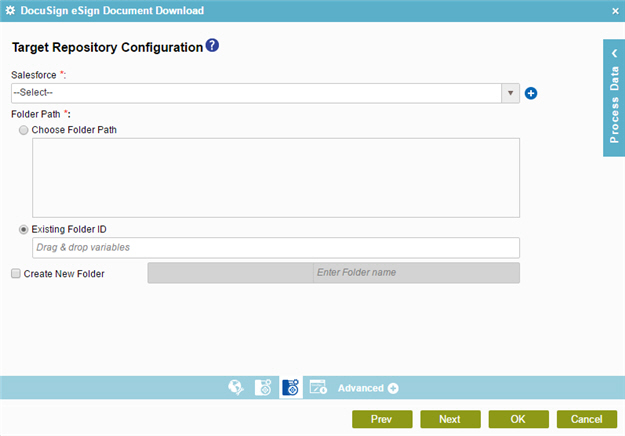Target Repository Configuration (Salesforce) - DocuSign eSign Document Download
Specifies the target location for your files on Salesforce in the DocuSign eSign Document Download activity.

Examples
Good to Know
- Some information about third-party integrations is outside the scope of the AgilePoint NX Product Documentation, and it is the responsibility of the vendors who create and maintain these technologies to provide this information. This includes specific business uses cases and examples; explanations for third-party concepts; details about the data models and input and output data formats for third-party technologies; and various types of IDs, URL patterns, connection string formats, and other technical information that is specific to the third-party technologies. For more information, refer to Where Can I Find Information and Examples for Third-Party Integrations?
How to Start
- On the Application Explorer screen, do one of these:
- Do one of these:
- Add an activity:
- In the Process Builder, in the Activity Library,
open the Digital Signature
 tab.
tab. - On the Digital Signature
 tab,
drag the DocuSign eSign Document Download
tab,
drag the DocuSign eSign Document Download  activity onto your process.
activity onto your process.
- In the Process Builder, in the Activity Library,
open the Digital Signature
- Change an activity:
- In your process, double-click your activity.
- Add an activity:
- On the Target Repository screen,
select your target location as
Salesforce
 .
.
- Click Target Detail Configuration
 .
.
Fields
| Field Name | Definition |
|---|---|
|
Salesforce |
|
|
Add Token |
|
|
Choose Folder Path |
|
|
Existing Folder ID |
|
|
Create New Folder |
|
|
Create New Folder Name |
|



